Pharmacists Play Key Role in Addressing Social Determinants of Health | PQA 2025
In a session at PQA 2025, presenters discussed the impact of SDoH on health outcomes and how pharmacy teams can identify and address barriers.
Social determinants of health (SDoH) significantly impact patient outcomes, well-being, and quality of life. These factors include safe housing, education, access to healthy food, employment opportunities, and physical environments like clean air and water. SDoH contribute to health disparities by creating barriers to healthy living, such as limited access to nutritious food or opportunities for physical activity.
Research has shown that people from underserved communities often face higher risks for conditions like diabetes, heart disease, and obesity.1 Addressing these disparities requires collaboration across sectors like education, transportation, and housing to improve environmental conditions and promote better health.
Community pharmacies, which are highly accessible, are well-positioned to help address SDoH. Most people in the United States live within 5 miles of a pharmacy, and pharmacies are more common than physician offices in low-income areas.2 Many pharmacies already assist with issues like affordability and transportation, making them key partners in promoting health equity.
In a session titled “Driving Impactful Change: Integrating SDoH Initiatives into Pharmacy Workflows and Programs” that was presented at the Pharmacy Quality Alliance (PQA) 2025 Annual Meeting, held May 19 to 21 in Tampa, Florida, Amber Baybayan, PharmD, senior clinical program manager at Outcomes, Courtney McMahon, PharmD, BCACP, director of clinical outcomes and therapeutic optimization at PerformRx, and Binal Patel, MPharm, BCGP, director of clinical initiatives and client liaison at PerformRx, discussed the impact of SDoH on health outcomes, how pharmacy teams can identify and address SDoH barriers, and common barriers seen across different patient populations.
READ MORE:
The speakers broke down SDoH into 5 key domains: education, economic stability, social and community context, neighborhood and built environment, and health care access and quality. They shared insights from a managed care organization's journey of implementing a formal SDoH screening process, transforming informal conversations into a structured workflow.
In January 2025, the organization had developed a comprehensive approach, achieving an 87% completion rate of SDoH assessments. Nearly 60% of assessments identified health-related barriers, with 99% providing immediate resources to patients. One particularly powerful example illustrated how a pharmacist identified a patient's loneliness during a medication review, connecting them with community resources and reporting the finding to the health plan.
“We're really looking at the patient holistically,” Patel said. “We're talking about food security, we're talking about aging programs, we're talking about education, and community resources. Referral to care is also a big one, it’s a general bucket but if you were to deep dive, you would see economic issues. You would see food insecurity. We saw a lot of transportation issues, as well … I also understand these are issues that we traditionally don't see as something a pharmacist does. But we're not really fixing the problem. We're just giving the patients additional resources to try and help them address their barriers.”
The organization’s approach included a standardized 9 question survey, real-time customized interventions, and reporting findings back to health plans. Year-over-year results showed significant improvements, with the number of participating pharmacies growing from 45 to 62 and achieving a 42% successful completion of SDoH assessments.
The presenters acknowledged the challenges of implementing such screenings, including pharmacists' potential discomfort with sensitive conversations and their limited time for comprehensive assessments. However, they highlighted the importance of normalizing conversations about social barriers, providing multiple assessment methods, and always offering concrete solutions.
The presentation showed that pharmacists could uncover and address barriers beyond traditional medication management. By identifying issues like food insecurity and transportation challenges, pharmacists can provide resources to patients that significantly impact their well-being.
“Around 68% of individuals have at least 1 unmet SDoH need,” Baybayan said. “That may not mean much in this room, but if you think about in our pharmacies, if you have 10 patients in front of you that you're serving, 7 out of those 10 members are going to have an unmet barrier to care that they should be receiving. That's a lot of patients that we can impact.”
Practical recommendations given during the presentation included approaching SDoH conversations with empathy, understanding available community resources, and maintaining open communication with health care teams. The speakers stressed the unique position of pharmacists in identifying and addressing these critical health barriers.
They concluded by underscoring the potential of systematic SDoH screening. By providing personalized resources, maintaining patient communication, and collaborating with health plans, pharmacists can play a crucial role in improving overall patient outcomes.
“We, as pharmacists, are the most accessible health care providers that patients have,” Baybayan said. “We have a lot of patients with SDoH, and a lot of times we don't think that we can make a difference. I don't work in a community setting, but we all have touch points with patients. Anyone on a pharmacy team that has a direct touch point with a patient can make a difference and be part of the change in helping to address SDoH barriers.”
References
1. Healthy People 2030: Social determinants of health. Report. Office of Disease Prevention and Health Promotion. Accessed May 30, 2025. https://odphp.health.gov/healthypeople/priority-areas/social-determinants-health
2. Meehan KA, Waters AR, Wangen M, et al. Not just about pills: Findings from a national survey of pharmacists to understand their views on addressing social determinants of health. Prev Med Rep. 2025 Jan 28;51:102991. doi: 10.1016/j.pmedr.2025.102991. PMID: 39990199; PMCID: PMC11846570.
Newsletter
Pharmacy practice is always changing. Stay ahead of the curve with the Drug Topics newsletter and get the latest drug information, industry trends, and patient care tips.






































































































































